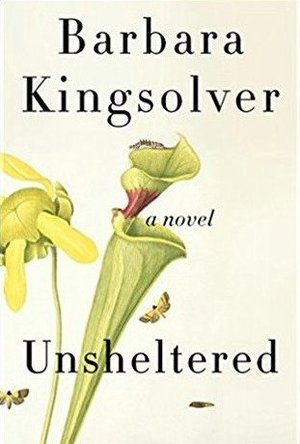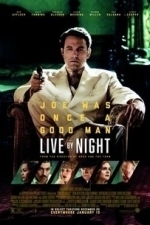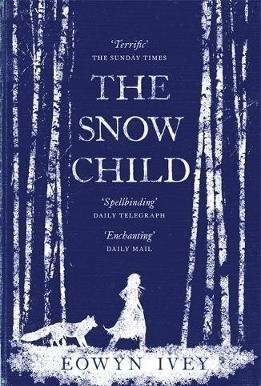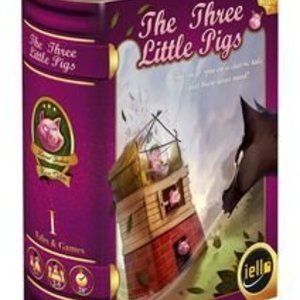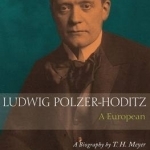
Ludwig Polzer-Hoditz, a European: A Biography
T.H. Meyer and Terry M. Boardman
Book
Finally available in English, Thomas Meyer's major biography of Ludwig Polzer-Hoditz (1869-1945)...
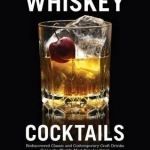
Whiskey Cocktails: Rediscovered Classics and Contemporary Craft Drinks Using the World's Most Popular Spirit
Book
Grab your bow tie and a rocks glass, because we're talking all about one of the most classic - and...
Cody Cook (8 KP) rated Writings Of Thomas Paine Volume 4 (1794 1796); The Age Of Reason in Books
Jun 29, 2018
The book seems to have had three major objectives: the support of deism, the ridicule of what Paine found loathsome in Christian theology, and the demonstration of how poor an example the Bible is as a reflection of God.
In a sense, Paine's arguments against Christian theology and scripture were meant to prop up his deistic philosophy. Paine hoped that in demonizing Christianity while giving evidences for God, he would somehow have made the case for deism. But this is not so. If Christianity is false, but God exists nonetheless, we are not left only with deism. There are an infinite number of possibilities for us to examine regarding the nature of God, and far too many left over once we have eliminated the obviously false ones. In favor of deism Paine has only one argument—his dislike of supernatural revelation, which is to say that deism appeals to his culturally derived preferences. In any case, Paine's thinking on the matter seemed to be thus: if supernatural revelation could be shown to be inadequate and the development of complex theology shown to be an error, one could still salvage a belief in God as Creator, but not as an interloper in human affairs who required mediators.
That being said, in his support of deism, Paine makes some arguments to demonstrate the reasonableness in belief in, if not the logical necessity of the existence of, God which could be equally used by Christians.
For instance, just as the apostle Paul argued in his epistle to the Romans that, "what can be known about God is plain to [even pagans], because God has shown it to them. For his invisible attributes, namely, his eternal power and divine nature, have been clearly perceived, ever since the creation of the world, in the things that have been made" (Romans 1:19-20, ESV), so also Paine can say that, "the Creation speaketh an universal language [which points to the existence of God], independently of human speech or human language, multiplied and various as they be."
The key point on which Paine differs from Paul on this issue is in his optimism about man's ability to reason to God without His assisting from the outside. Whereas Paul sees the plainness of God from natural revelation as an argument against the inherent goodness of a species which can read the record of nature and nevertheless rejects its Source's obvious existence, Paine thinks that nature and reason can and do lead us directly to the knowledge of God's existence apart from any gracious overtures or direct revelation.
On the witness of nature, Paine claims, and is quite correct, that, "THE WORD OF GOD IS THE CREATION WE BEHOLD: And it is in this word, which no human invention can counterfeit or alter, that God speaketh universally to man." What is not plainly clear, however, is that man is free enough from the noetic effects of sin to reach such an obvious conclusion on his own. Indeed, the attempts of mankind to create a religion which represents the truth have invariably landed them at paganism. By paganism I mean a system of belief based, as Yehezkel Kaufmann and John N. Oswalt have shown, on continuity.iv In polytheism, even the supernatural is not really supernatural, but is perhaps in some way above humans while not being altogether distinct from us. What happens to the gods is merely what happens to human beings and the natural world writ large, which is why the gods are, like us, victims of fate, and why pagan fertility rituals have attempted to influence nature by influencing the gods which represent it in accordance with the deeper magic of the eternal universe we all inhabit.
When mankind has looked at nature without the benefit of supernatural revelation, he has not been consciously aware of a Being outside of nature which is necessarily responsible for it. His reasoning to metaphysics is based entirely on his own naturalistic categories derived from his own experience. According to Moses, it took God revealing Himself to the Hebrews for anyone to understand what Paine thinks anyone can plainly see.
The goal of deism is to hold onto what the western mind, which values extreme independence of thought, views as attractive in theism while casting aside what it finds distasteful. But as C.S. Lewis remarked, Aslan is not a tame lion. If a sovereign God exists, He cannot be limited by your desires of what you'd like Him to be. For this reason, the deism of men like Paine served as a cultural stepping stone toward the atheism of later intellectuals.
For Paine, as for other deists and atheists like him, it is not that Christianity has been subjected to reason and found wanting, but that it has been subjected to his own private and culturally-determined tastes and preferences and has failed to satisfy. This is the flipside of the anti-religious claim that those who believe in a given religion only do so because of their cultural conditioning: the anti-religionist is also conditioned in a similar way. Of course, how one comes to believe a certain thing has no bearing on whether that thing is true in itself, and this is true whether Christianity, atheism, or any other view is correct. But it must be stated that the deist or atheist is not immune from the epistemic difficulties which he so condescendingly heaps on theists.
One of the befuddling ironies of Paine's work is that around the time he was writing about the revealed religions as, “no other than human inventions set up to terrify and enslave mankind, and monopolize power and profit," the French were turning churches into “temples of reason” and murdering thousands at the guillotine (an instrument of execution now most strongly identified with France's godless reign of terror). Paine, who nearly lost his own life during the French Revolution, saw the danger of this atheism and hoped to stay its progress, despite the risk to his own life in attempting to do so.
What is odd is that Paine managed to blame this violent atheism upon the Christian faith! Obfuscated Paine:
"The Idea, always dangerous to Society as it is derogatory to the Almighty, — that priests could forgive sins, — though it seemed to exist no longer, had blunted the feelings of humanity, and callously prepared men for the commission of all crimes. The intolerant spirit of church persecution had transferred itself into politics; the tribunals, stiled Revolutionary, supplied the place of an Inquisition; and the Guillotine of the Stake. I saw many of my most intimate friends destroyed; others daily carried to prison; and I had reason to believe, and had also intimations given me, that the same danger was approaching myself."
That Robespierre's deism finally managed to supplant the revolutionary state's atheism and that peace, love, and understanding did not then spread throughout the land undermines Paine's claims. Paine felt that the revolution in politics, especially as represented in America, would necessarily lead to a revolution in religion, and that this religious revolution would result in wide acceptance of deism. The common link between these two revolutions was the idea that the individual man was sovereign and could determine for himself what was right and wrong based on his autonomous reason. What Paine was too myopic to see was that in France's violence and atheism was found the logical consequence of his individualistic philosophy. In summary, it is not Christianity which is dangerous, but the spirit of autonomy which leads inevitably into authoritarianism by way of human desire.
As should be clear by now, Paine failed to understand that human beings have a strong tendency to set impartial reason aside and to simply evaluate reality based on their desires and psychological states. This is no more obvious than in his own ideas as expressed in The Age of Reason. Like Paine's tendency to designate every book in the Old Testament which he likes as having been written originally by a gentile and translated into Hebrew, so many of his criticisms of Christian theology are far more a reflection upon himself than of revealed Christianity. One has only to look at Paine's description of Jesus Christ as a “virtuous reformer and revolutionist” to marvel that Paine was so poor at introspection so as to not understand that he was describing himself.
There is much more that could be said about this work, but in the interest of being somewhat concise, I'll end my comments here. If you found this analysis to be useful, be sure to check out my profile and look for my work discussing Paine and other anti-Christian writers coming soon.
Bookapotamus (289 KP) rated Unsheltered in Books
Jun 22, 2018
The book is set in two different eras, in the same town, on the same street, in Vineland, NJ. Willa Knox, present day, is fictional. AS is her family. Mary Treat in 1871, is apparently a real person, a lover of science, plants and creatures. The connection between the two stories is a bit weak I felt. Not sure if it was intentional, but it just didn't really capture my attention in the way I believe it was supposed to. In 1871, Thatcher Greenwood (fictional as well I believe?) meets Mary, and they get along because their beliefs mesh well - they believe in science, and follow Darwin's teachings, and Thatcher finds himself in a bit of jam as the town is "ruled" by Landis, a strict believer that God has created everything, and science is witchcraft.
Willa, is struggling when we meet her - in fact, her entire family - every single one of them seems to have some serious issues! I found it depressing and really didn't find myself liking any of the family very much. We see some similar struggles to Thatcher (their houses are both falling down around them) but not much else mirrors the past.
I do know based on initial talk of this novel, and the title of course, that the joining of the past vs present is in the "Unsheltered" aspect of both of these stories, the way Landis mirrors Trump, the ways a world can come unraveled by rules and rulers, as well as the courage to stand for what you believe in. But it just wasn't there for me - it was so subtle, uninspiring, slow and boring.
I did LOVE the plants and stuff - it's the main reason I wanted to read this book, but sadly they just weren't too heavily featured. The little tidbits of random facts about Pitcher Plants and Venus Fly Traps, and some other plants and bugs was pretty fun and fascinating and I wish there was more of it.
In the end - this just fell really flat for me. I know some of the people and events are real, but some are not (which was hard for me to follow) and Barbara's research and writing is top-notch. I just really wanted an engaging story, with a bit more interest, and a lot less heavy eyelid.
Steven Sklansky (231 KP) rated Live By Night (2017) in Movies
Sep 10, 2017
Ben Affleck really does love Boston, because once again that where this whole thing begins. I didn't live in the 20's but the Boston accent must not have been established yet. It was quite refreshing not to hear it in a movie. I really didn't know Boston's backstory but I guess like everywhere on the East Coast there was a mob presence. They did a really good job showing the life of someone in the mob. It wasn't just the killing and booze. It really went deep with the love story of both women and what he had to go though to keep the love and them alive. Even though one of them turned out to be a backstabbing bitch.
When the story progressed to Tampa it was interesting to see something that I don't think has been portrayed in movies. Or I have never seen it. The mob in Florida. The interactions between the Irish and Italian mob in a world of Mexicans and Cubans was done very well. There was a lot going on and it never got boring. The only part of the story that got a little off was rivalry of the mob in Tampa and Miami. You never saw the fights between them until the end. I just thought it was over and done with after the Italians were run out of town. Or maybe I just missed it.
I won't tell you what happened to anyone at the end but the gun fight was amazing. So may parts put in and the chirography was done very well. I think the very end could have been done differently. To me it was very off putting and didn't understand why they choose to go that direction. Granted it was based off a book that I never read and maybe that's the way it had to be. But it could have been written better in the book too. Books seem to get the point across better anyway.
If you like gangster movies, see it. If you like Ben Affleck, see it. If you just want to watch a movie not to be bored, see it.
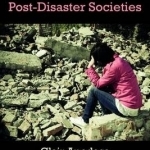
State Repression in Post-Disaster Societies
Book
A natural hazard is a physical event but a disaster is a social and political phenomenon. Natural...
Hazel (1853 KP) rated The Snow Child in Books
May 30, 2017
Set in Alaska during the 1920s this is the story of a couple, Jack and Mabel, who, aside from a stillbirth, have not had any children despite their desperate longing. Now that they are both approaching fifty years of age they know that they will never be able to have a son or daughter of their own. One winter, during the first snowfall, the two of them on an uncharacteristic, spur of the moment impulse build a snowman next to their cabin. Rather than building a large snowman they make a smaller one in the shape of a girl, decorating her with scarves and mittens – they have made a snow girl.
Eowyn Ivey has based her novel on a Russian fairy tale, Snegurochka, which in English translates to The Snow Maiden. It was Arthur Ransome’s retelling, Little Daughter of the Snow, which inspired Ivey, but the general storyline is essentially the same, although some versions have alternative endings. For those who are familiar with Snegurochka and its variants will know that it does not end happily therefore it seems inevitable that The Snow Child will head in the same direction. However which ending will it most resemble?
Throughout the novel it is impossible to be absolutely sure that the little girl who turns up outside the cabin the day after the snowman has been built (and destroyed) is in fact the snow girl magically transformed into flesh and bone; or whether it is a lost child and the circumstance are purely coincidental. There is a third option: Jack and Mabel could be imagining things through their desperate longing, but this is easy to rule out.
The snow is understandably a key theme throughout the story. At the beginning the anticipated Alaskan winter is imagined as a “cold on the valley like a coming death”. Not only will it be unbearably freezing, Jack and Mabel will struggle to make do with their limited amount of food and supplies. After the arrival of the child the winter becomes a happy occasion. Jack and Mabel’s relationship improves and they become less isolated after befriending some neighbours. The only heartbreak is when the girl, Faina, disappears in the spring; but as she comes back as soon as it snows, winter becomes something to look forward to. Another snowy link in the story is Faina’s name, which she claims means “the colour on snow when the sun turns” in Russian. This also makes the idea of her truly being the snow girl more convincing.
The novel does predictably have an unhappy ending but the epilogue makes up for this by revealing the contentment of the remaining characters a few years into the future.
As already mentioned, The Snow Child was not a very gripping read, but it was a beautiful tale in the way that fairy tales, even those with unhappy endings, often can be.
Hazel (1853 KP) rated The Snow Child in Books
Dec 14, 2018
Set in Alaska during the 1920s this is the story of a couple, Jack and Mabel, who, aside from a stillbirth, have not had any children despite their desperate longing. Now that they are both approaching fifty years of age they know that they will never be able to have a son or daughter of their own. One winter, during the first snowfall, the two of them on an uncharacteristic, spur of the moment impulse build a snowman next to their cabin. Rather than building a large snowman they make a smaller one in the shape of a girl, decorating her with scarves and mittens – they have made a snow girl.
Eowyn Ivey has based her novel on a Russian fairy tale, <i>Snegurochka</i>, which in English translates to <i>The Snow Maiden</i>. It was Arthur Ransome’s retelling, <i>Little Daughter of the Snow</i>, which inspired Ivey, but the general storyline is essentially the same, although some versions have alternative endings. For those who are familiar with <i>Snegurochka</i> and its variants will know that it does not end happily therefore it seems inevitable that <i>The Snow Child</i> will head in the same direction. However which ending will it most resemble?
Throughout the novel it is impossible to be absolutely sure that the little girl who turns up outside the cabin the day after the snowman has been built (and destroyed) is in fact the snow girl magically transformed into flesh and bone; or whether it is a lost child and the circumstance are purely coincidental. There is a third option: Jack and Mabel could be imagining things through their desperate longing, but this is easy to rule out.
The snow is understandably a key theme throughout the story. At the beginning the anticipated Alaskan winter is imagined as a “cold on the valley like a coming death”. Not only will it be unbearably freezing, Jack and Mabel will struggle to make do with their limited amount of food and supplies. After the arrival of the child the winter becomes a happy occasion. Jack and Mabel’s relationship improves and they become less isolated after befriending some neighbours. The only heartbreak is when the girl, Faina, disappears in the spring; but as she comes back as soon as it snows, winter becomes something to look forward to. Another snowy link in the story is Faina’s name, which she claims means “the colour on snow when the sun turns” in Russian. This also makes the idea of her truly being the snow girl more convincing.
The novel does predictably have an unhappy ending but the epilogue makes up for this by revealing the contentment of the remaining characters a few years into the future.
As already mentioned, <i>The Snow Child</i> was not a very gripping read, but it was a beautiful tale in the way that fairy tales, even those with unhappy endings, often can be.
Purple Phoenix Games (2266 KP) rated Tales & Games: The Three Little Pigs in Tabletop Games
Aug 18, 2020
Tales & Games: The Three Little Pigs (which I will fondly refer to as 3LP for the remainder of this review) is a cute little family dice and take-that game about building houses for maximum points while avoiding The Wolf’s hungry advances. The winner of the game is the Little Piggy who has built the most complete structures using the best materials that afford them the most endgame points.
To setup, sort the building tiles by material type and house level type as shown inside the box cover. Place the dice and spinner nearby. Let the youngest or cutest player go first. The game is now ready to be played!
On a player’s turn they will roll all the dice Yahtzee-style (so with two re-roll attempts), and the remainder of the turn is based on what is rolled. Players are not required to re-roll, but must stop once two or more Wolf symbols are rolled, or after the second re-roll. The player may then use the dice to purchase house materials corresponding to what was rolled. If three doors are rolled, a player may purchase a straw door (which cost two door symbols) or a wooden door (which cost three door symbols). These house parts can be of mixed materials, so once the pieces have been purchased, house construction can then be done.
Should a player roll The Wolf, then the “breath” spinner will be spun. The player who rolled The Wolf dice will choose an opponent AND one of their houses to target. Spin the spinner and destroy all matching pieces in their house. Some children have issues with this, but hey, they should have built more brick sections! Play continues in this fashion taking turns rolling and purchasing and building until several stacks of house sections are gone (depending on player count). All incomplete houses are crumbled, and piggy faces on standing houses are scored to determine the victor! When playing with my kiddo I don’t use the bonus cards, but they are available if playing with older and more strategic players.
Components. As this is one of the famed (and first in the line) Tales & Games Bookshelf games, it has set a standard for the series. These games come in boxes that look like books on the outside, open like a book, and contain a story to be read as a prelude to the game, if wished. The box is very very cool, and the insert is pink and wonderfully designed. The house tiles are thick and colorful, and the pink dice are just a joy to roll. I love the components in this one!
So obviously this is a game really designed to target younger gamers. And though it says 7+ on the box, I have successfully played this with my 3 year old with zero issues. He loves it, and in turn, makes me love it too. Now, I will certainly not pull this out at any given Game Night with adults (unless we have gamer spouses or friends who have NEVER played modern games at all). However, I really do enjoy playing it with my son for now, and for super-newbies. It is colorful, light on rules, offers some choices, and of course, has a touch of luck and take-that. All this while still feeling like you are in the story of The Three Little Pigs. So I say, if you were ever on the fence with this one – get it. Play it with whomever you like and just enjoy it. It is light enough with just a touch of adultness to keep you smiling. But don’t invite your Twilight Imperium or Mage Knight friends. They won’t like it. We at Purple Phoenix Games know how to get down with the simpler games as well, so that’s why we give this one a blown-over 9 / 12.
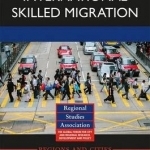
Rethinking International Skilled Migration
Micheline van Riemsdijk and Qingfang Wang
Book
In today's global knowledge economy, competition for the best and brightest workers has intensified....

